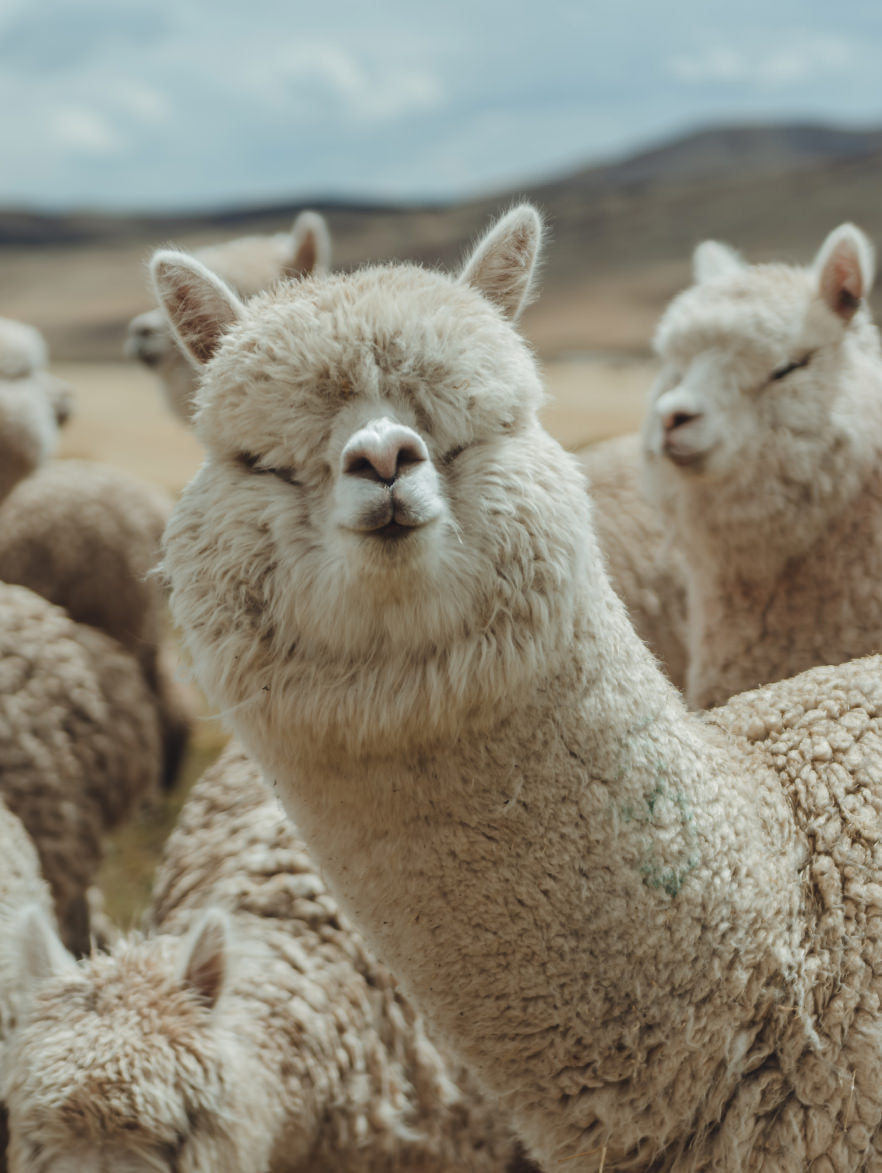



You know those furry looking creatures with a long neck and cute face? You’ve probably heard of both alpacas and llamas before, and have most likely mistaken one for the other since they look so similar to the untrained “alpaca-or-llama” eye. Both animals come from the camelid family (yes camels come from this family, too), and exhibit playful expressions and fluffy coats. On top of that, both of these animals can be found in the mountains of Peru - so it’s easy to wonder: what’s the difference between an alpaca and a llama? As it turns out, their eccentric personalities and temperaments make the relationship between alpacas and llamas truly unique. Here is everything you need to know about the difference between an alpaca and a llama.
Key takaways
- • Alpacas are typically used for their fibers while llamas are usually pack animals.
- • Alpacas tend to be more social than llamas.
- • Llamas have long faces and banana shaped ears, while alpacas have blunt faces.
- • Both llamas and alpacas may spit, but it’s relatively rare.
- • Llamas are generally calm and reserved, while alpacas are social and curious.




Appearance and Role: Alpaca Vs. Llama
Alpacas are typically much smaller than llamas, weighing around 150 pounds each. And they may grow to be over 3 feet tall. An adult llama, on the other hand, can grow to be 5’7 to 5’11 in height, and weigh between 287 and 600 pounds. If you were to place a llama and an alpaca next to one another, you’d also see that alpacas have small, blunt faces, with short ears. Llamas generally have long faces with unmistakable banana-shaped ears.
In the mountains of Peru the relationship between farmers,alpacas, and llamas are all important, butbut are quite different. Alpacas produce soft fiber, which is often turned into durable, versatile garments. Llamas can produce fiber, but more often they play the part of a pack animal. Llamas are usually capable of carrying about 25% of their body weight (which is usually somewhere between 70 and 150 pounds). Interestingly enough, Llamas have actually guarded and protected alpacas since the Inca Empire,While alpacas aren’t very capable of defending themselves against fox and other predators, llamas are quite good guardians and will look over a group of alpacas.

Llama vs. Alpaca Temperament
Alpacas tend to be more social than llamas, which makes them great around other alpacas and humans. They are timid though compared to llamas who are brave protectors. Alpacas communicate with one another through body language and humming noises.
Llama Lifespan vs. Alpaca Lifespan
The llama lifespan usually falls between 20 and 25 years. They are born weighing 20 - 24 pounds and can stand, run, and nurse within an hour of birth. The alpaca lifespan is similar to the llama lifespan, but it may be a little bit shorter. Alpacas usually live to be somewhere between 15 and 20 years of age, which would be akin to the lifespan of a sheep or goat. Both llama babies and alpaca babies are called “crias” which is the spanish word for pups or offspring. Alpaca babies are significantly smaller than llamas weighing only 10 to 17 pounds. Mother llamas and alpacas carry their babies longer than human babies with gestation periods over 330 days.

Everything You Need to Know About Alpaca and Llama Spit
A Brief History of Alpacas in the Inca Empire
Alpacas played a vital role in the health of the Inca Empire. These animals were so treasured that their wools were typically reserved for royalty.and hunting alpacas was even outlawed for the protection of their favorite furry creatures. But when the Spanish Conquistadors invaded the Inca Empire, alpacas were nearly driven to the point of extinction. Some Inca survivors fled into the Andes mountains, where they knew the climate would be difficult for conquistadors to survive, and they took their alpacas with them. Alpacas quickly proved themselves again, surviving the harsh climate, and providing their loyal companions with the wool and food that they needed. Eventually alpacas were “rediscovered” in other areas of the world in the 1800s, making them one of the most popular sources of natural fiber in the world.
Llamas and Alpacas Can Both Produce Woolalpaca wool sweater.
Both llamas and alpacas are capable of producing wool. But llama hair tends to be coarse, while alpaca hair is generally soft and fine. Alpaca hair also grows much faster than llama hair, and it is often used for fleece production. Alpacas were selectively bred by the Inca Indians to produce soft, beautiful fibers. And, today, Alpaca fiber is often used in the production of some of the softest and most sustainable clothes in the world. clothing items and blankets.
Depending on how llama or alpaca wool is spun, you may produce a heavy or lightweight product. When you compare alpaca wool to popular sheep wools, you’re likely to find that alpaca fibers are much softer to the touch than traditional sheep fibers. Llama wool is also usually softer than sheep wool, but not quite as soft as alpaca wool. It’s typically more durable, as well. Finally, alpaca fiber does not contain lanolin (llama wool may contain small amounts), which makes it one of the most hypoallergenic wool options that is available today.


















